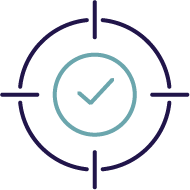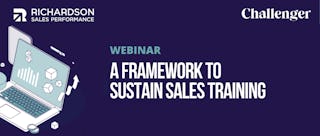Agile Sales Prospecting: Techniques for Modern Sales Success

What is the most effective way to prospect in today’s sales environment?
The most effective way to prospect today is through an agile, sprint-based approach that emphasizes personalization, adaptability, and strategic timing. Instead of relying on high-volume outreach, agile prospecting allows sales professionals to continuously refine their messaging and engagement based on real-time customer signals, resulting in higher conversion rates and stronger pipeline growth.
Effective sales prospecting today requires more than persistence—it demands agility. Targeting the right prospects, crafting personalized, contextual messaging, and securing meaningful engagement are all iterative processes that evolve rapidly with the customer’s world. Sales professionals must respond to real-time shifts in prospect priorities, industry developments, and buying behaviors. Agility must become a visible practice, not just a concept—and that starts with sprint-based prospecting.
Read on to learn how to improve your prospecting approach by implementing agility into the sales process. In this article, you’ll explore:



Why agile prospecting maximizes relevance and momentum. Learn how to apply short, structured sales sprints to ensure your outreach evolves alongside your customer’s priorities and maintains consistent momentum.
The importance of generating demand as a sales rep. Learn how agile prospecting encourages reps to define ideal customer profiles, choose the right channels, and create personalized, value-driven messaging that resonates across platforms.
Why strategy outperforms "the numbers game.” Learn why modern prospecting requires higher quality targeting, messaging, and strategic timing.
What Is Agile Sales Prospecting?
Agile sales prospecting involves using short, focused bursts of activity—called sales sprints—that align with key moments in the customer conversation. Each sprint aims for a mini-close to build momentum, giving reps the flexibility to adjust based on real-time outcomes. Richardson's Consultative Prospecting program teaches sales professionals how to apply selling sprints into their prospecting efforts to develop relationships and pursue new business more effectively.
This methodology follows a structured prepare–engage–advance pattern:
Prepare: Research the account, develop tailored messaging, and plan the outreach sequence.
Engage: Execute targeted outreach that invites conversation and earns trust.
Advance: Assess response, reflect on performance, and determine the next best step.
This agile approach enables sales professionals to evolve with the customer’s needs and continuously refine outreach based on new insights, ensuring every interaction is relevant and value-driven.
The Three Principles of Agile Prospecting
Engage to Sell
Buyers today want valuable conversations—not pitches. That’s why engaging as a thoughtful, informed advisor is essential.
Build a research cadence to stay updated on industry and company developments.
Monitor the prospect’s social media footprint to uncover real-time signals.
Network authentically by commenting on posts and sharing relevant content.
These activities build a foundation of trust so when it’s time to request a meeting or information, you’ve already earned the right to ask.
Be Your Own Micro-Marketer
Top-performing sales professionals act as their own marketers. They craft targeted messaging, nurture relationships, and build thought leadership.
Start by defining your ideal customer profile:
What are their pain points, goals, and measurable challenges?
Who are the key decision-makers and influencers?
What metrics define their size, growth, and market position?
With this profile, determine the best communication channels (email, video, social media, etc.) and build a cadence that balances consistency with relevance. Every message should deliver insight or value—not just a sales ask.
Challenge the “Numbers Game” Mindset
Spray-and-pray prospecting no longer works. Informed buyers ignore generic messages. Agile prospecting means improving every step of your process—from targeting to messaging to timing.
Craft messaging that:
Demonstrates how you’ve helped similar companies solve real problems
Highlights tangible business value and results
Prompts curiosity while staying concise and relevant
Use strong value statements that connect your capabilities to the prospect’s key issues. These short messages should clearly define the issue, the action you propose, and the value the customer will receive. Tone matters—deliver with confidence and positivity.
Building a Cadence for Consistency and Impact
A consistent communication cadence is essential. Define:
Frequency and timing of outreach
Preferred communication channels
Criteria for when to follow up, escalate, or pivot
This data-informed approach ensures your outreach is strategic, not scattershot. It also enables performance analysis, so you can improve your process over time.
Why Agile Prospecting Works
Agile Prospecting aligns with the dynamic nature of modern B2B sales. As buyers’ needs shift, your prospecting strategy must evolve too. This methodology helps reps:
Personalize messaging based on real-time data
Engage leads with timely, relevant value
Create momentum through strategic mini-closes
By replacing outdated tactics with an agile, research-driven process, sales professionals can transform initial outreach into lasting relationships and pipeline growth.
Frequently Asked Questions
Q: What is agile sales prospecting?
A: Agile sales prospecting is a flexible, iterative approach that uses sales sprints to adjust messaging and strategy in real time based on customer insights.
Q: What are sales sprints?
A: Sales sprints are short bursts of prospecting activity focused on achieving small milestones that keep momentum moving toward a close.
Q: How do I improve my prospecting messaging?
A: Tailor each message based on research, emphasize business impact, use a clear value statement, and keep communication concise and relevant.
Q: How do I choose the right communication cadence?
A: Base your cadence on prospect responsiveness, internal data, and channel performance. Be consistent but avoid over-communicating.
Q: Why is the “numbers game” approach outdated?
A: Generic, high-volume outreach treats prospects like commodities and delivers low ROI. Personalized, agile messaging yields stronger results.
Ready to equip your team with the skills to prospect more effectively? Contact Richardson Sales Performance to learn more about our Consultative Prospecting program.
Richardson is proud to offer a suite of programs that enable sales professionals to better understand the market and prospect to source opportunities. Our Consultative Prospecting Training equips sellers with an agile framework for initiating conversations, building pipeline, and generating qualified opportunities. Contact us to find out how our training helps sales teams plan, execute, and adapt their prospecting efforts to build lasting skills and pursue new business.






